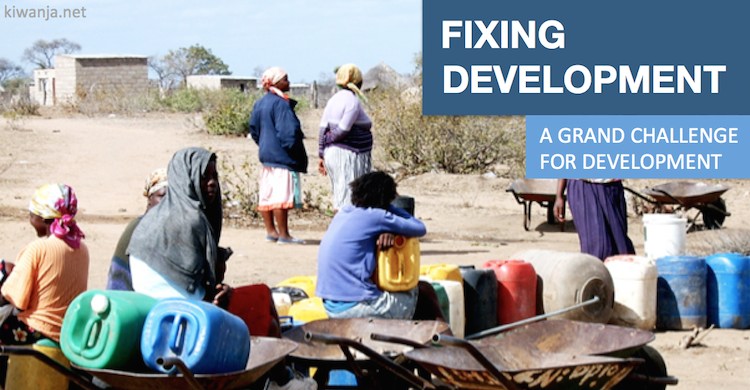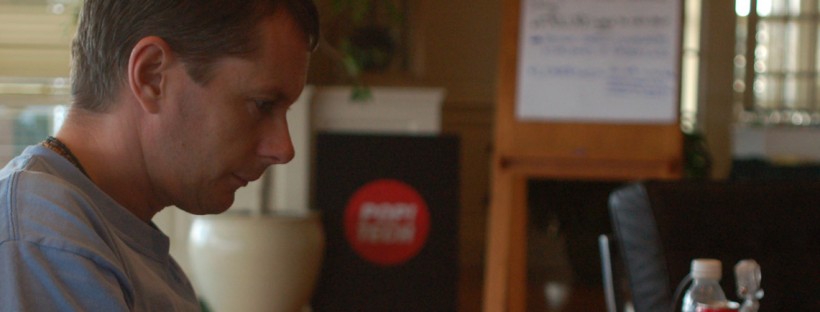Earlier last week I stumbled into a post on Chris Blattman’s website provocatively titled ‘Is this the most effective development program in history?‘ It in, he shares the story of how, in 2011, the Nigerian government handed out $60 million to 1,200 Nigerians – that’s about $50,000 each – to help them create, run and/or scale a business. “Three years later there are hundreds more new companies, generating tons of profit, and employing about 7,000 new people”. Not bad for a reasonably modest amount of money.
Although I see this as more of an investment program rather than a development initiative, I come to similar conclusions to Chris. What if we channelled more funds to the middle and the bottom, and let market forces and entrepreneurialism in-country take over?
Today I read another post, this time on the Guardian development professionals network, which poses a not-too-dissimilar question. In ‘Five reasons funding should go directly to local NGOs‘, Jennifer Lentfer – creator of how-matters.org and Director of Communications at International Development Exchange – argues that we should channel more funding directly to local innovators, NGOs and social entrepreneurs on the ground in developing countries. To put things in context, only about 1% of humanitarian aid goes directly to local actors in the global south at the moment. The rest goes through what Dhananjayan Sriskandarajah calls ‘fundermediaries’. In other words, larger global development players who then ‘trickle’ it down (or so the theory goes).
Jennifer’s call for more local funding is based on five key arguments:
1. While outsiders struggle with concepts such as ‘community participation’ and ‘local empowerment’, there are often “dedicated and embedded local partners who are working hard to understand and address their own problems” who do get it.
2. Local organisations, by their very nature, are intrinsic to the local communities they serve, and are part of the social fabric. They belong there, and are often more vested in developing meaningful, sustainable, long-lasting solutions.
3. The larger the (outside) institutions, the more funds they need to divert internally to sustain themselves and their staff, offices and operational budgets.
4. Most local institutions are free from the burden of annual reports, log frames and three year funding models meaning that many have greater staying power than outside, larger institutions who come and go based on a range of external factors.
5. There is proof, albeit in low quantities (because of the lack of direct funding at this level) that “grassroots grantees get results”.
In a separate post, Dhananjayan Sriskandarajah shares five excuses donors give for not funding local NGOs directly. Among these are that local NGOs don’t have the expertise or capacity to fill in all the forms; it is too expensive to administer the smaller grant amounts suitable for smaller organisations; that funds need to be channelled through ‘trusted partners’ to manage risk; money laundering and anti-terror rules make it hard to give to ‘non-trusted partners’; and a pressure for funds to be put through organisations in their home country (i.e. organisations which, more often than not, are also in the global north).
I’ve been arguing for more direct support for local innovators, social actors and NGOs for well over a decade, so each of these posts resonated strongly. It has also been a central part of my argument that we build tools that local organisations can take and use on their own terms, again something I’ve been speaking about on the ICT4D circuit since 2003.
Of course, not all international NGOs are the same, and not all grassroots are the same, either. But if there’s evidence that in certain circumstances local players have better chance of achieving a desired impact, often for less money, then it’s right and proper that we investigate further.

So, how about a new Development Challenge, modelled on the same types of competition where investors start with the same amount of money (not real money, mind you) and aim to turn it into as much as they can within a fixed period of time? It would need to be a fairly long-term experiment, and it could go something along the lines of:
1. Identify half-a-dozen international ‘fundermentaries’
2. identify half-a-dozen grassroots NGOs
3. Determine a modest starting budget – the same amount for each organisation
4. Allow them to dictate where and how they spend the money via a short proposal
5. Using an independent evaluator, take some baseline data based on (4)
6. Disburse the funds (real money in this case)
7. Come back in a predetermined period of time (at least three years)
8. Using an independent evaluator, carry out some monitoring and evaluation
Which projects are still running? What impact have they had? What changes have they helped facilitate? How sustainable are they? What changes have there been in the community? How did the approaches of the local organisations differ from the others? What conclusions can we draw from all of this?
We wouldn’t have much to lose by trying out an experiment like this, but a whole lot to gain. Of course, if it was shown that grassroots designed and managed projects performed better, the international development community would have some awkward and difficult questions to answer.
And if the international community does better? Well, then it’s just business as usual.
A version of this post also appeared on the Stanford Social Innovation Review



